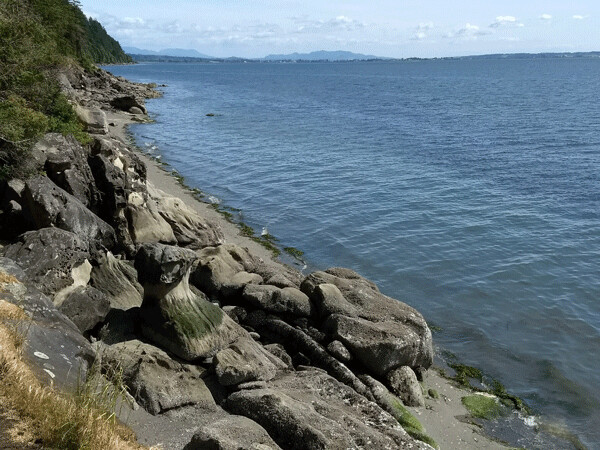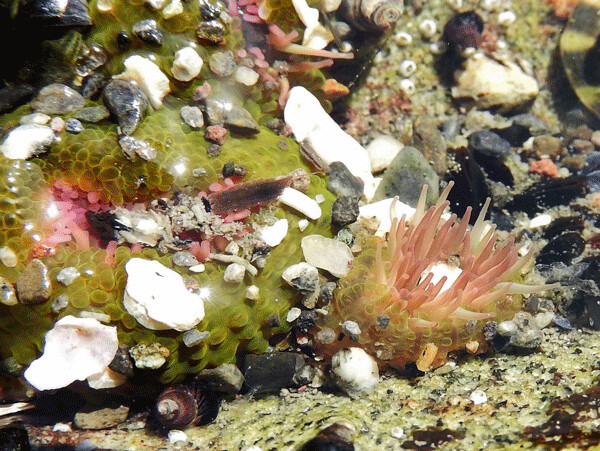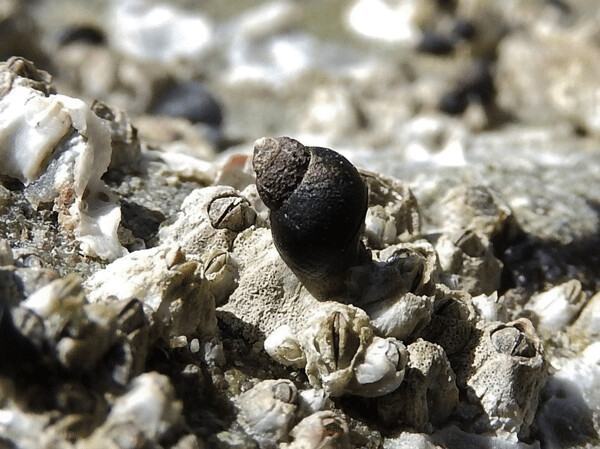News & Articles
Browse all content by date.





I took the scenic route along the coast from Anacortes, Washington, up to my friends’ house in Bellingham. Even though I’d just returned to the mainland from a couple days on Orcas Island, every glimpse of ocean through the trees was thrilling. With so many deep green islands dotting the sparkling blue, the view felt strangely similar to my beloved Boundary Waters—on a much larger scale. I’d enjoyed being out on the ferry, too, weaving among the San Juan Islands in a grander version of navigating the granite knobs of Saganaga Lake.
So much of this landscape feels familiar—but with a twist. Western species of hemlocks, firs, and cedars are much bigger than their Midwestern cousins. The towhees who call among those trees have prominent white wing spots, and the Pacific wrens—only recently recognized as a separate species from winter wrens—sing such a rapid-fire steam of notes that I couldn’t pretend to tell the two apart. The Pacific starflowers who glow in the understory are rounder and pinker than their cousins who are probably blooming along my Wisconsin driveway without me.
My excitement at seeing all of these sort-of-familiar species may seem odd, but their friendly faces provide stabilizing anchors as I navigate new trails and recover from driving new freeways. Plus, when viewed from a certain angle, they are thrilling testaments to the steady march of evolution, adaptation, and the connectedness of life. It’s no accident that they look alike, and there are probably good reasons for them to be slightly different.
One scenic pullout along the Chuckanut Drive seemed especially promising, with dirt paths disappearing over the steep bank. A young man with a dog on a leash bounded up out of the woods, exuberant about the beautiful, sunny weather. “Where does this trail go?” I asked. “To the beach!” he responded, so I set out through the forest in the direction he’d come from.
The trail soon became a bit of a bushwhack among lush thickets of sword fern and the holly-like leaves of Oregon grape. Finally, through the cedar boughs, I spotted the ocean. From deep shade I entered bright sun on a stretch of beach intersected by toes of bedrock and strewn with giant boulders. After taking in the view of misty islands and blue waves, a sliver of bright purple shell in the wrack line caught my eye. The little ridge of debris pushed up by waves is an important resource for scavengers, and I scanned it for interesting bits, too. The bright reddish-purple shell of a shore crab contrasted brilliantly with a heap of vivid green seaweed. It wasn’t food for my belly, but nourishment for my eyes.
Soon I saw an odd pattern of sunken circles in the sand. Puzzling for a second, a half-formed thought nudged me to look around. Anemones! Of course! A flood of memories from teaching at an outdoor school in California washed over me. I’d stumbled on tidepools. This zone of constant flux is no day at the beach for the critters who must adapt to the see-saw of wet-dry, dark-light, warm-cold, and more or less saline conditions. Those who have adapted to this environment are amazing.
Aggregating anemones, for instance, grow in colonies of genetically identical clones. They can reproduce asexually through binary fission, and over time one anemone can generate a carpet of replicas. The light green skin on the soft plop of their bodies is tinted by symbiotic algae who provide sugars and oxygen in return for carbon dioxide and a safe place in the sun. The algae also create sunscreen to protect them both from excess rays. Pink tentacles waving in the center of a submerged anemone shoot deadly, harpoon-like nematocyst cells at small fish, snails or crabs.
The exposed anemones had pulled their tentacles in and covered themselves with sand and shells to help prevent desiccation. Higher up, in a bowl in one of the rocks, I found a true tidepool bustling with waving anemones and other life.
From my perch above, I watched as an entire colony of fingertip-sized acorn barnacles licked the water in unison. Not tongues, but feathery legs ducked in and out of shells to sweep the mini currents for plankton and detritus.
In the aquatic jungle, bushes of algae rustled with the action of crabs. Small snails crept over every surface. . . but not all of them were truly snails. After watching for several minutes I couldn’t resist. Scooping gently, I captured one of the dark, twisted shells in the palm of my hand. After just a second of hesitation, the cream and tan-striped legs and black-tipped eyestalks of a tiny hermit crab emerged. He righted himself, scuttled sideways, rolled again, and got back up. With soft, twisted bodies, hermit crabs need the protection of a borrowed shell to survive.
The tide was returning by then, creeping up over the beds of anemones and pushing the wrack line higher. I giggled at the clown in my hand before putting him back and scrambling up to the forest. This juxtaposition of semi-familiar and completely peculiar is what makes travel so fun. Next stop: ALASKA!
Emily is on her way to Alaska for the summer! Follow the journey in this column, and at her blog: http://cablemuseum.org/connect/.
For 50 years, the Cable Natural History Museum has served to connect you to the Northwoods. Come visit us in Cable, WI! Our new exhibit: “Bee Amazed!” is open.
| Tweet |


